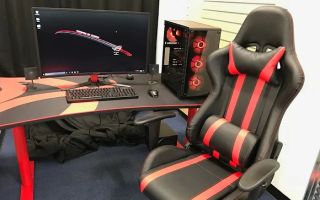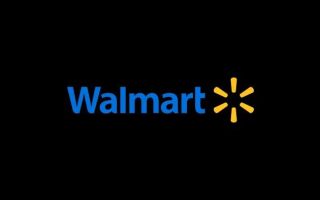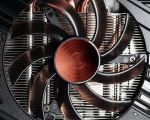How to Boot Dell Laptop from USB: A Step-by-Step Guide
- Understanding the Need to Boot from USB
- Preparing Your USB Drive for Booting
- Entering the BIOS or UEFI Settings
- Setting USB as the Primary Boot Device
- Saving Changes and Booting from USB
- Troubleshooting Common Booting Issues
Understanding the Need to Boot from USB
Booting from a USB drive is a crucial skill for many Dell laptop users. Whether you need to install a new operating system, run diagnostic tools, or recover lost data, booting from a USB drive allows you to access a different environment without affecting your laptop's main operating system. If you’ve ever faced issues like a corrupted operating system or if you're upgrading to a new version of Windows, booting from a USB drive offers a convenient and effective solution.
Additionally, IT professionals and tech-savvy users often boot from USB to troubleshoot system problems or to perform software updates. For instance, using a bootable USB with a Linux distribution can give you an environment to fix Windows-related issues without needing a secondary machine. Knowing how to boot from a USB on your Dell laptop could save time and hassle, especially when you are in a pinch and need to restore or fix your system quickly.
Preparing Your USB Drive for Booting
The first step in booting from a USB drive is ensuring that your USB drive is properly prepared. This requires creating a bootable USB, which can be done by downloading the necessary software or operating system image and using tools like Rufus or the Windows Media Creation Tool. Here’s how you can prepare your USB drive:
- Download the OS Image: For installing a new OS, such as Windows or Linux, download the appropriate image from the official website.
- Format the USB Drive: Before creating the bootable drive, ensure that your USB drive is formatted to the correct file system (usually FAT32 or NTFS).
- Create the Bootable Drive: Use software like Rufus or the Windows Media Creation Tool to write the OS image to the USB drive.
Once your USB drive is properly set up, you’re ready to move on to the next step—configuring your Dell laptop to boot from it.
Entering the BIOS or UEFI Settings
In order to boot from a USB drive, you will need to access your laptop's BIOS or UEFI settings. The BIOS (Basic Input/Output System) or UEFI (Unified Extensible Firmware Interface) is the firmware that allows your laptop to initialize hardware components and boot up the operating system. To access these settings on most Dell laptops, follow these steps:
- Turn off your laptop: Ensure the laptop is powered down completely.
- Power it back on: As soon as the Dell logo appears on the screen, press the F12 key repeatedly until the boot menu appears.
- Select BIOS/UEFI settings: In some cases, you may need to press F2 to enter the BIOS settings directly.
The BIOS or UEFI settings allow you to configure various options related to the laptop’s hardware. Once inside, you can change the boot order to prioritize your USB drive.
Setting USB as the Primary Boot Device
Once you’ve accessed the BIOS or UEFI settings, the next step is to adjust the boot order so that your Dell laptop prioritizes booting from the USB drive. Here’s how you can set USB as the primary boot device:
- Navigate to the Boot Menu: In the BIOS or UEFI settings, find the Boot section. The exact location may vary depending on your laptop model, but it is usually labeled as "Boot Order" or "Boot Sequence."
- Set USB as the First Boot Option: Use the arrow keys to move "USB" to the top of the boot priority list. This will tell the laptop to check for a bootable USB drive before loading the internal hard drive.
- Save the Changes: Press the F10 key to save and exit the BIOS/UEFI settings. Your laptop will now prioritize booting from the USB drive whenever it is connected.
After saving the changes, your Dell laptop is configured to boot from USB whenever a bootable USB drive is connected. If your USB drive is properly set up, the laptop will boot into the operating system or tool stored on the USB drive.
Saving Changes and Booting from USB
Now that you’ve set your Dell laptop to boot from USB, you can proceed to boot from the USB drive. Ensure the bootable USB drive is plugged into an available USB port before you turn on the laptop. Upon restarting, your laptop should detect the bootable USB and begin loading the operating system or tools stored on it.
If everything is set up correctly, you will be presented with the installation or recovery screen depending on the content of the USB drive. You can then proceed to install a new operating system, run diagnostic tools, or perform any other tasks that require booting from the USB drive.
It’s important to note that, depending on the operating system on the USB drive, you may need to follow additional on-screen prompts or configure language and regional settings. Once the process is complete, your laptop will function as intended, whether that means starting a fresh OS installation or using recovery tools to repair your system.
Troubleshooting Common Booting Issues
While booting from a USB drive is generally a straightforward process, you might run into some issues. Here are a few common problems and troubleshooting tips to help you resolve them:
- USB Drive Not Detected: If your Dell laptop doesn’t detect the USB drive, ensure it is properly inserted and formatted. Check the BIOS/UEFI settings again to confirm that the boot order is correctly configured to prioritize USB.
- USB Drive Isn’t Bootable: If the USB drive doesn’t boot, ensure it’s properly set up as a bootable device. You can reformat the USB and use a tool like Rufus to create a new bootable USB drive.
- Boot Order Not Saving: If changes to the boot order aren’t saving, check for a "Secure Boot" option in the BIOS/UEFI settings. Disabling Secure Boot may resolve the issue and allow you to boot from USB.
By following these troubleshooting steps, you should be able to resolve any issues and successfully boot your Dell laptop from USB.
In conclusion, learning how to boot your Dell laptop from USB is a valuable skill, especially when you need to install or repair the operating system, run diagnostic tools, or use recovery options. Whether you are looking to fix a malfunctioning system or upgrade to a new OS, booting from USB provides a fast and effective solution. If you're looking for more tech-related tips and tricks, visit Ninja Stik for more information and products that can enhance your tech experience.




























